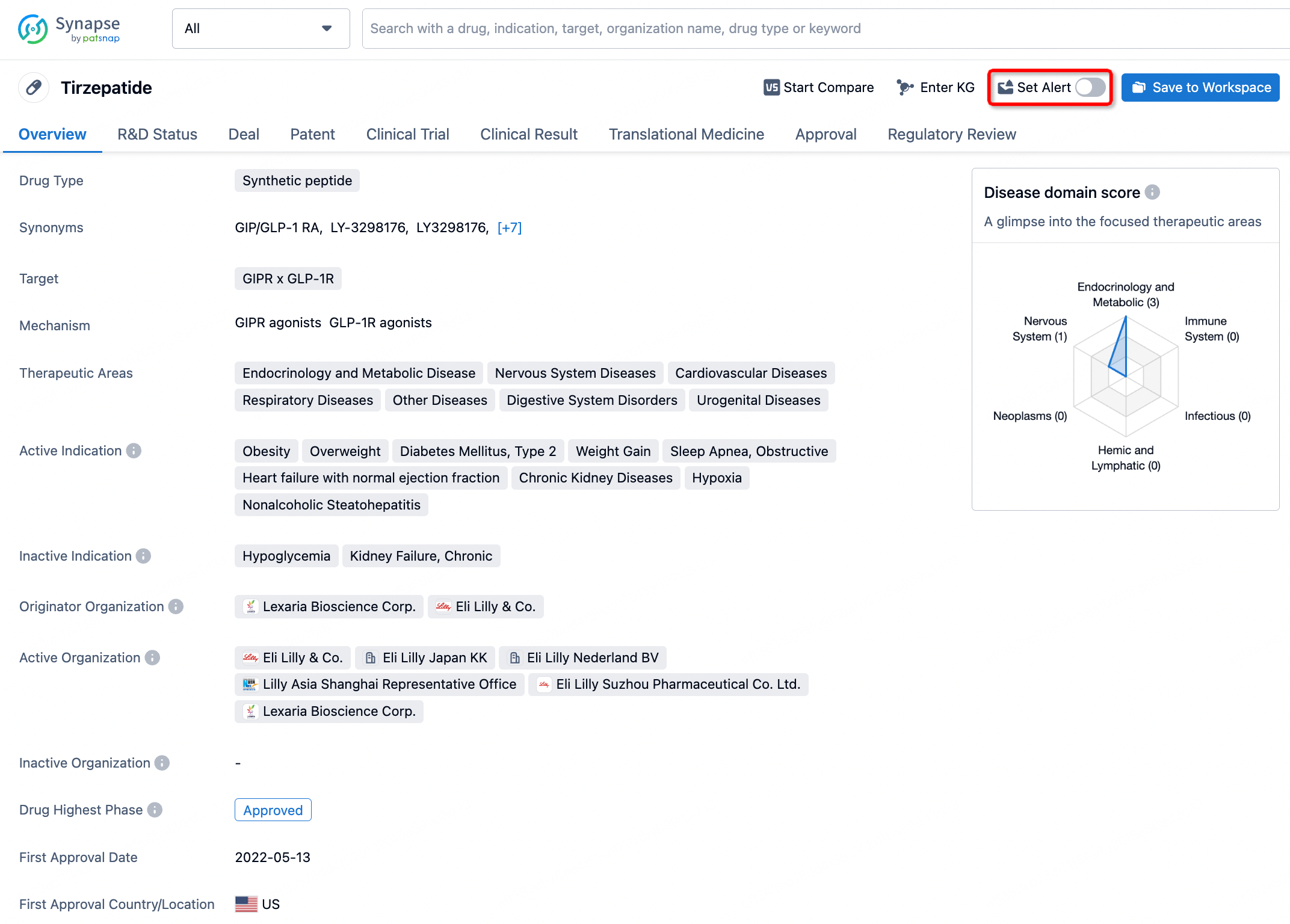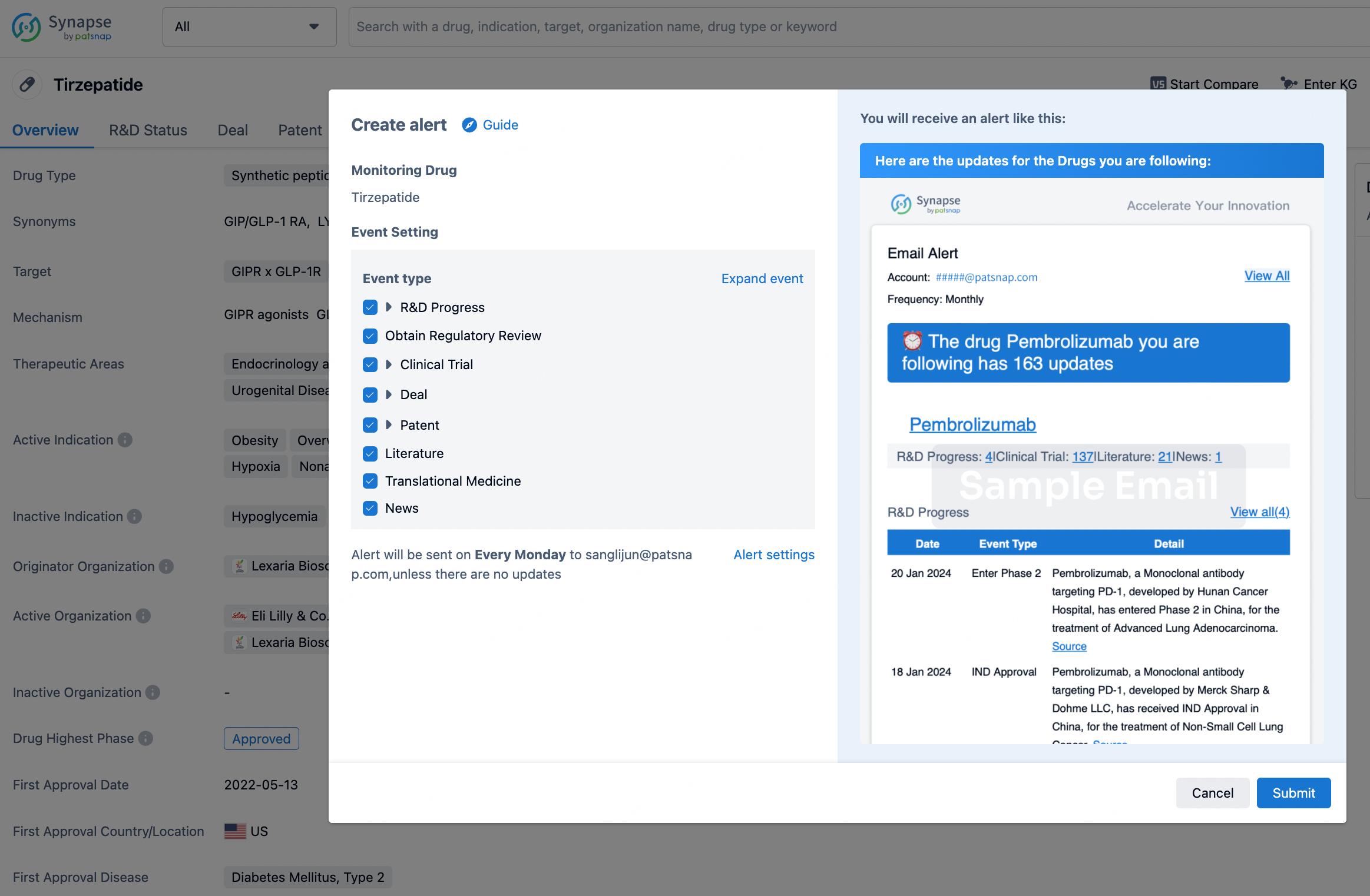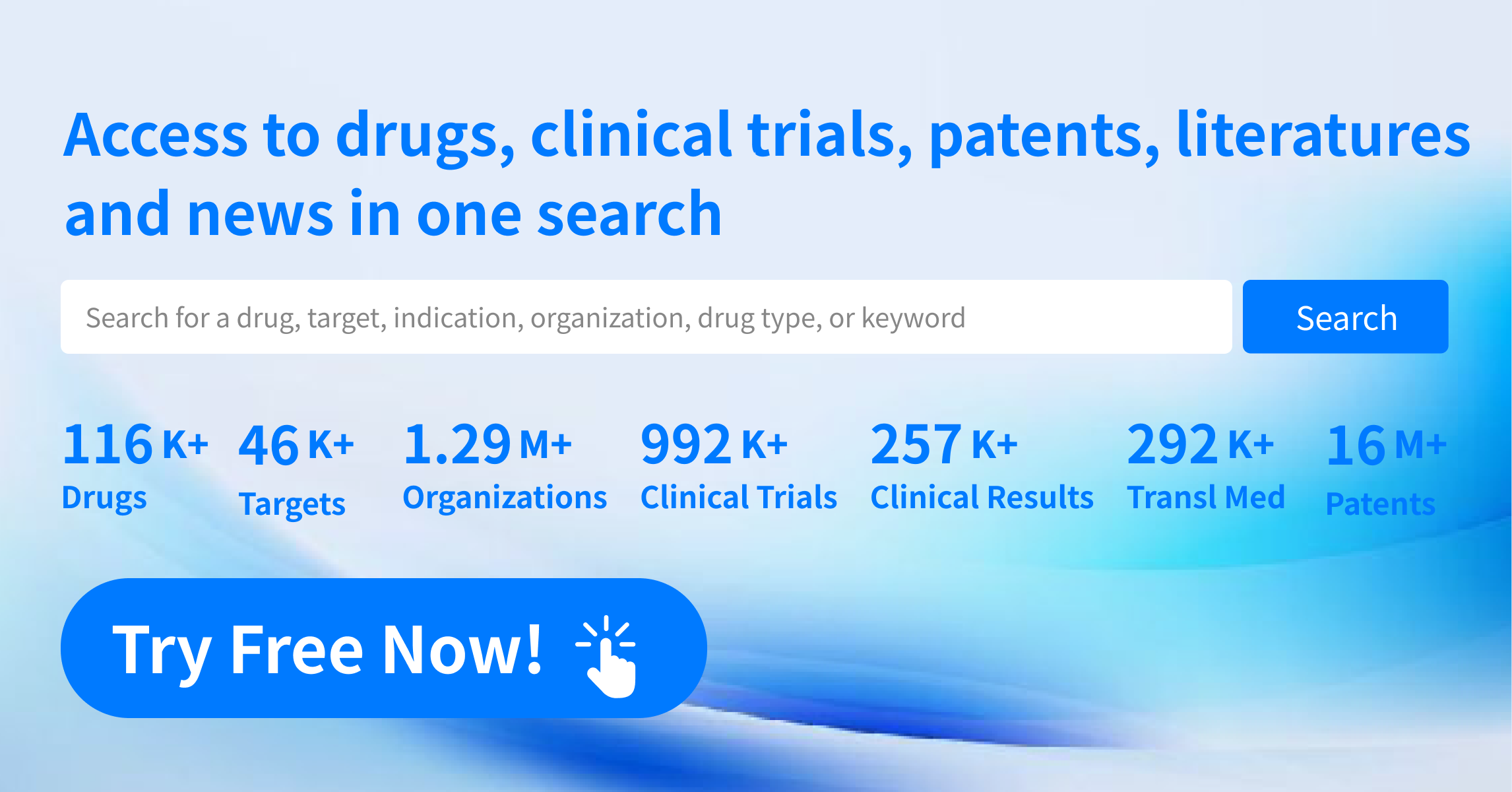Request Demo
What is Propyl Gallate used for?
14 June 2024
Introduction to Propyl Gallate:
Propyl Gallate, often abbreviated as PG, is an ester formed from gallic acid and propanol. This compound has garnered significant attention in both the pharmaceutical and food industries. It is commonly recognized for its role as an antioxidant, preventing oxidation and extending the shelf life of various products. Although not a drug in the traditional sense, Propyl Gallate is included in numerous formulations due to its preservative properties and potential health benefits.
In terms of trade names, Propyl Gallate is usually listed under its chemical name in food and cosmetic products. In the pharmaceutical industry, it is often incorporated as an auxiliary substance rather than being marketed as a standalone drug. The primary target of Propyl Gallate is oxidative degradation, which it mitigates by scavenging free radicals that can cause cellular damage. Research institutions worldwide have been investigating the wide-ranging effects of this compound, including its potential role in cancer prevention and other health benefits.
Propyl Gallate belongs to a class of compounds known as phenolic antioxidants. Its indications are mainly tied to its antioxidant properties, where it is used to maintain the stability and efficacy of various products, ranging from foods and cosmetics to pharmaceuticals. Though the research on Propyl Gallate is ongoing, current studies have shown promising results in its ability to protect against oxidative stress, which is implicated in numerous chronic diseases, including cancer, cardiovascular diseases, and neurodegenerative disorders.
Propyl Gallate Mechanism of Action:
The primary mechanism of action of Propyl Gallate centers on its antioxidant capabilities. This compound works by donating electrons to free radicals, neutralizing them before they can cause cellular damage. Free radicals are unstable molecules that can damage cells, proteins, and DNA by altering their chemical structure. This oxidative damage is a significant contributor to aging and various diseases, including cancer and cardiovascular conditions.
Propyl Gallate's antioxidant properties stem from its phenolic structure, which allows it to effectively stabilize free radicals. By neutralizing these reactive species, Propyl Gallate helps to protect lipids, proteins, and other critical biomolecules from oxidative damage. Additionally, it can chelate metal ions, which catalyze oxidation reactions, further enhancing its protective effects.
In food and cosmetic products, Propyl Gallate is often used in combination with other antioxidants like BHA (Butylated Hydroxyanisole) and BHT (Butylated Hydroxytoluene) to provide a synergistic effect, enhancing the overall stability of the product. In pharmaceuticals, its role is to protect the active ingredients from oxidative degradation, thereby maintaining their efficacy and safety over extended periods.
How to Use Propyl Gallate:
Propyl Gallate is primarily incorporated into products during the manufacturing process. In foods, it is often added to fats and oils to prevent rancidity. It is commonly found in products like vegetable oils, margarine, and processed foods. For cosmetics, it is included in formulations to extend shelf life and maintain the stability of ingredients.
In the pharmaceutical context, Propyl Gallate is used as an excipient – an inactive substance that serves as the vehicle or medium for a drug or other active substances. This means it is not administered directly to patients but is included in the formulation to ensure the stability of the active ingredients.
The onset time for Propyl Gallate's antioxidant effects is almost immediate, as it begins to interact with free radicals and metal ions as soon as it is incorporated into a product. Its effectiveness can be sustained over long periods, provided that the product is stored under appropriate conditions to prevent degradation.
What is Propyl Gallate Side Effects:
While Propyl Gallate is generally recognized as safe when used within prescribed limits, it can cause side effects in some individuals. Common side effects may include gastrointestinal discomfort, nausea, and skin reactions such as dermatitis. These adverse reactions are relatively rare and usually occur at higher concentrations than those typically found in food and cosmetic products.
Contraindications for the use of Propyl Gallate include known allergies to the compound or related substances. Individuals with a history of hypersensitivity reactions should avoid products containing Propyl Gallate to prevent allergic responses. Additionally, caution should be exercised when using products with Propyl Gallate in populations with heightened sensitivity, such as young children, pregnant women, and the elderly.
Long-term exposure to high doses of Propyl Gallate has raised some concerns in animal studies, where it has been linked to potential liver and kidney damage. However, these findings are not directly applicable to typical human exposure levels, which are significantly lower. Regulatory agencies like the FDA and EFSA have established acceptable daily intake levels to mitigate any potential risks.
What Other Drugs Will Affect Propyl Gallate:
Propyl Gallate is primarily used as an excipient in pharmaceutical formulations, meaning it is not typically subject to interactions with other drugs in the same way that active pharmaceutical ingredients are. However, its antioxidant properties can potentially interact with other substances in ways that could affect the stability or efficacy of a product.
For instance, Propyl Gallate can interact with other antioxidants like BHA and BHT, potentially enhancing their collective efficacy through synergistic effects. Conversely, competitive interactions with other antioxidants could theoretically reduce its effectiveness if not properly balanced in the formulation.
It is also essential to consider that excessive exposure to multiple antioxidant compounds, including Propyl Gallate, could potentially lead to an imbalance in oxidative and reductive processes within the body. While this is more of a theoretical concern than a documented interaction, it underscores the importance of adhering to recommended usage levels in both food and pharmaceutical products.
In conclusion, Propyl Gallate plays a crucial role as an antioxidant in various industries, offering protection against oxidative damage and extending the shelf life of products. While generally safe when used appropriately, it is essential to be aware of potential side effects and contraindications to ensure its safe and effective utilization. Further research continues to explore the full extent of its benefits and potential applications, promising exciting developments in the years to come.
Propyl Gallate, often abbreviated as PG, is an ester formed from gallic acid and propanol. This compound has garnered significant attention in both the pharmaceutical and food industries. It is commonly recognized for its role as an antioxidant, preventing oxidation and extending the shelf life of various products. Although not a drug in the traditional sense, Propyl Gallate is included in numerous formulations due to its preservative properties and potential health benefits.
In terms of trade names, Propyl Gallate is usually listed under its chemical name in food and cosmetic products. In the pharmaceutical industry, it is often incorporated as an auxiliary substance rather than being marketed as a standalone drug. The primary target of Propyl Gallate is oxidative degradation, which it mitigates by scavenging free radicals that can cause cellular damage. Research institutions worldwide have been investigating the wide-ranging effects of this compound, including its potential role in cancer prevention and other health benefits.
Propyl Gallate belongs to a class of compounds known as phenolic antioxidants. Its indications are mainly tied to its antioxidant properties, where it is used to maintain the stability and efficacy of various products, ranging from foods and cosmetics to pharmaceuticals. Though the research on Propyl Gallate is ongoing, current studies have shown promising results in its ability to protect against oxidative stress, which is implicated in numerous chronic diseases, including cancer, cardiovascular diseases, and neurodegenerative disorders.
Propyl Gallate Mechanism of Action:
The primary mechanism of action of Propyl Gallate centers on its antioxidant capabilities. This compound works by donating electrons to free radicals, neutralizing them before they can cause cellular damage. Free radicals are unstable molecules that can damage cells, proteins, and DNA by altering their chemical structure. This oxidative damage is a significant contributor to aging and various diseases, including cancer and cardiovascular conditions.
Propyl Gallate's antioxidant properties stem from its phenolic structure, which allows it to effectively stabilize free radicals. By neutralizing these reactive species, Propyl Gallate helps to protect lipids, proteins, and other critical biomolecules from oxidative damage. Additionally, it can chelate metal ions, which catalyze oxidation reactions, further enhancing its protective effects.
In food and cosmetic products, Propyl Gallate is often used in combination with other antioxidants like BHA (Butylated Hydroxyanisole) and BHT (Butylated Hydroxytoluene) to provide a synergistic effect, enhancing the overall stability of the product. In pharmaceuticals, its role is to protect the active ingredients from oxidative degradation, thereby maintaining their efficacy and safety over extended periods.
How to Use Propyl Gallate:
Propyl Gallate is primarily incorporated into products during the manufacturing process. In foods, it is often added to fats and oils to prevent rancidity. It is commonly found in products like vegetable oils, margarine, and processed foods. For cosmetics, it is included in formulations to extend shelf life and maintain the stability of ingredients.
In the pharmaceutical context, Propyl Gallate is used as an excipient – an inactive substance that serves as the vehicle or medium for a drug or other active substances. This means it is not administered directly to patients but is included in the formulation to ensure the stability of the active ingredients.
The onset time for Propyl Gallate's antioxidant effects is almost immediate, as it begins to interact with free radicals and metal ions as soon as it is incorporated into a product. Its effectiveness can be sustained over long periods, provided that the product is stored under appropriate conditions to prevent degradation.
What is Propyl Gallate Side Effects:
While Propyl Gallate is generally recognized as safe when used within prescribed limits, it can cause side effects in some individuals. Common side effects may include gastrointestinal discomfort, nausea, and skin reactions such as dermatitis. These adverse reactions are relatively rare and usually occur at higher concentrations than those typically found in food and cosmetic products.
Contraindications for the use of Propyl Gallate include known allergies to the compound or related substances. Individuals with a history of hypersensitivity reactions should avoid products containing Propyl Gallate to prevent allergic responses. Additionally, caution should be exercised when using products with Propyl Gallate in populations with heightened sensitivity, such as young children, pregnant women, and the elderly.
Long-term exposure to high doses of Propyl Gallate has raised some concerns in animal studies, where it has been linked to potential liver and kidney damage. However, these findings are not directly applicable to typical human exposure levels, which are significantly lower. Regulatory agencies like the FDA and EFSA have established acceptable daily intake levels to mitigate any potential risks.
What Other Drugs Will Affect Propyl Gallate:
Propyl Gallate is primarily used as an excipient in pharmaceutical formulations, meaning it is not typically subject to interactions with other drugs in the same way that active pharmaceutical ingredients are. However, its antioxidant properties can potentially interact with other substances in ways that could affect the stability or efficacy of a product.
For instance, Propyl Gallate can interact with other antioxidants like BHA and BHT, potentially enhancing their collective efficacy through synergistic effects. Conversely, competitive interactions with other antioxidants could theoretically reduce its effectiveness if not properly balanced in the formulation.
It is also essential to consider that excessive exposure to multiple antioxidant compounds, including Propyl Gallate, could potentially lead to an imbalance in oxidative and reductive processes within the body. While this is more of a theoretical concern than a documented interaction, it underscores the importance of adhering to recommended usage levels in both food and pharmaceutical products.
In conclusion, Propyl Gallate plays a crucial role as an antioxidant in various industries, offering protection against oxidative damage and extending the shelf life of products. While generally safe when used appropriately, it is essential to be aware of potential side effects and contraindications to ensure its safe and effective utilization. Further research continues to explore the full extent of its benefits and potential applications, promising exciting developments in the years to come.
How to obtain the latest development progress of all drugs?
In the Synapse database, you can stay updated on the latest research and development advances of all drugs. This service is accessible anytime and anywhere, with updates available daily or weekly. Use the "Set Alert" function to stay informed. Click on the image below to embark on a brand new journey of drug discovery!
AI Agents Built for Biopharma Breakthroughs
Accelerate discovery. Empower decisions. Transform outcomes.
Get started for free today!
Accelerate Strategic R&D decision making with Synapse, PatSnap’s AI-powered Connected Innovation Intelligence Platform Built for Life Sciences Professionals.
Start your data trial now!
Synapse data is also accessible to external entities via APIs or data packages. Empower better decisions with the latest in pharmaceutical intelligence.


